How to Clean Antique Oil Lamps
Learn how to clean your antique oil lamps. To get the full light output from your antique oil lamp you’ll need to clean them.
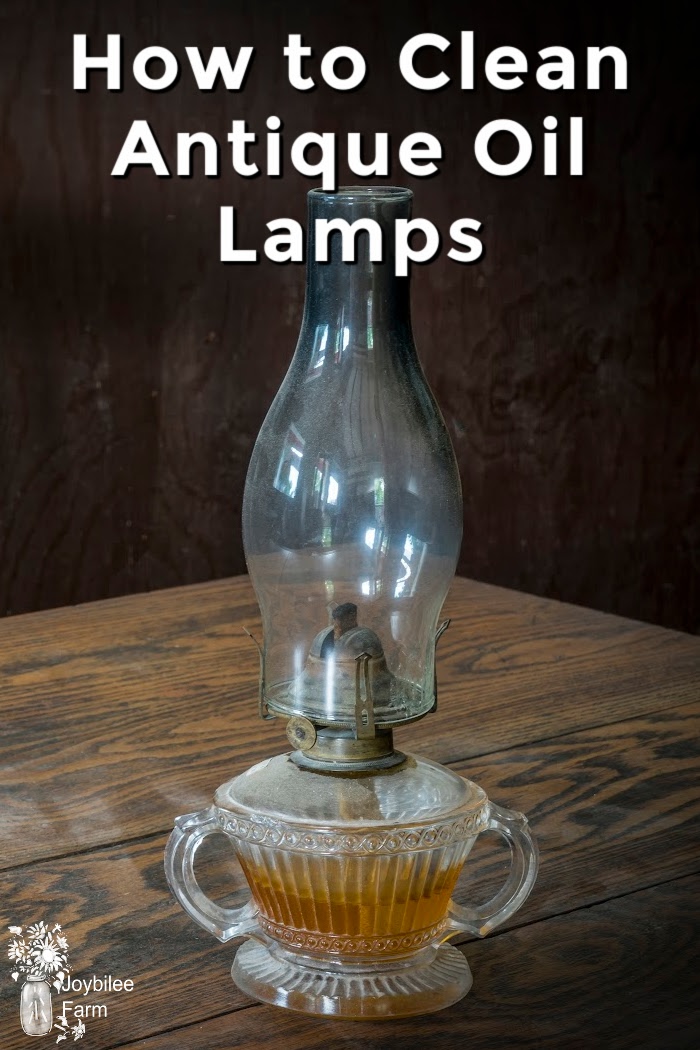
When we bought our first antique oil lamp Mr. Joybilee’s dad scoffed at us. He grew up in 1910 with smoky old kerosene lamps in Scotland and much preferred the convenience and cleanness of electric lighting. He didn’t understand why we would choose to buy antique oil lamps for our home. But I cherished my antique oil lamps and have used them for many years. I use them during power outages and just for ambiance in our home. I switched early from kerosene lamp oil to liquid paraffin lamp oil because paraffin was less smoky and smelly. The odourless fumes can still be toxic though, so allow for adequate ventilation to prevent headaches and chemical sensitivities.

There are three types of antique oil lamps: flat wick, central draught (tubular round wick), and mantle lamps, like Coleman camp lanterns. The most common of these is the flat wick oil lamps. Antique oil lamps give more light than candles with pressurized oil lamps giving off up to 100 lumens of light and flat wick oil lamps giving about 20 to 30 lumens of, light depending on how wide the wick is. For comparison, the average candle gives off 13 lumens while a 60 watt incandescent bulb produces 800 lumens. Oil lamps are used for camping, and when the power goes out. If you live off-grid you’ll use your oil lamps more frequently.
To get the full light output from your antique oil lamps you’ll want to clean them and keep the fuel topped up. But be aware that fuel evaporates from the reservoir of your oil lamps over time, as the wicks are exposed to air. If you are conserving fuel, you may want to keep your lamp reservoirs only partially full, filling them up just before intensive use, during a storm or expected power outage.
Just follow these simple steps and you’ll have your flat wick oil lamps running clean and at high efficiency.
Parts of an antique oil lamp
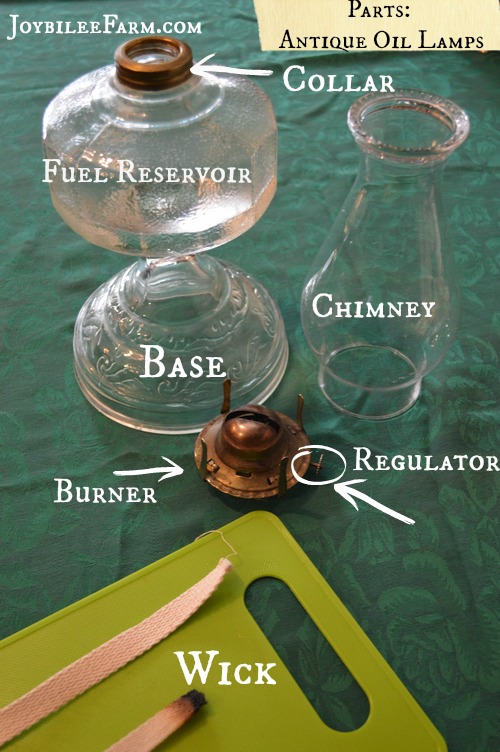
Replacement Parts for antique oil lamps:
Cotton Wicks
Brass Burners
Glass Chimneys
Turn a mason jar into an oil lamp
Lamp Oil
Clean the glass of dust and soot
You don’t need fancy cleaners to clean the glass chimney. Just use a sink of hot soapy water and wipe the inside with an unpaper towel. Be sure to remove all soot and then rinse with hot water. And let it stand to air dry. Your glass chimney will be streakless and clean.
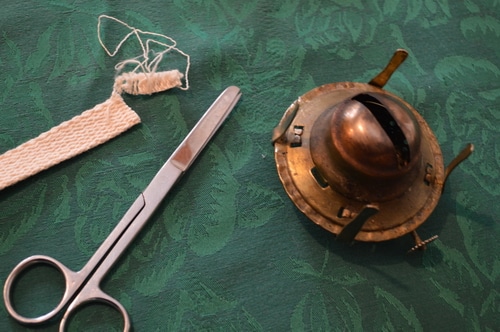
Trim the wick of your antique oil lamp
Remove the wick from the burner.
Clean the burner under running water and brush with a metal brush to get any ash out of the mechanism. You may find carbonized pieces of wick lodged in the burner mechanism. You can remove these by brushing with a toothbrush under running water.
Allow the burner to air dry.
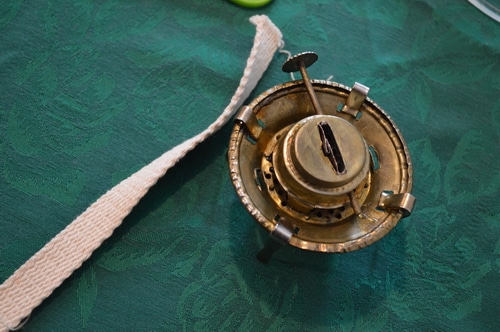
Replace the wick with a fresh wick. Trim the loose threads on the wick with sharp scissors. Slide it into the mechanism at the bottom of the burner and roll the threading screw regulator to raise the wick, just above the burner.
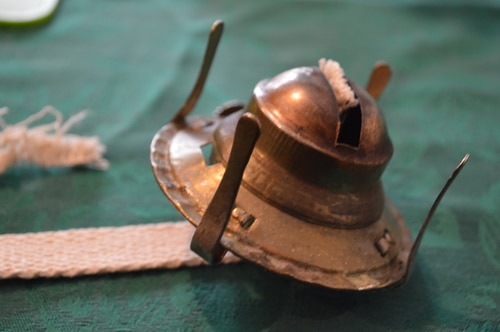
Fill the lamp with oil
When you remove the burner from the lamp the reservoir will be open. Refill the reservoir with lamp oil or liquid paraffin to at least half full.
Do not use cooking oil or olive oil. The heavier oils don’t wick up easily in order to keep the flame supplied with fuel. Learn how to make an olive oil lamp here.
Replacing liquid paraffin or kerosene lamp oil with alternative fuels can result in explosions and wildfires. Only use the recommended fuel for your oil lamp.
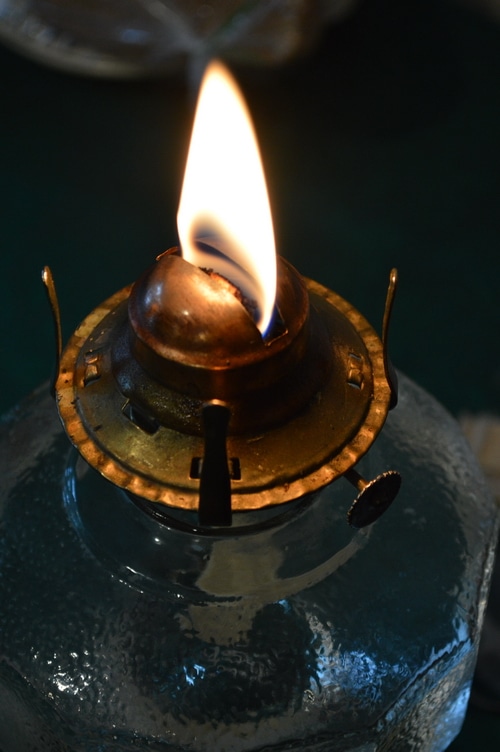
Replace the burner on your antique oil lamp
Screw the burner back into place. Allow the wick to saturate in the paraffin oil for an hour before lighting.
Turn up the wick. Light as usual. Turn down the wick using the regulator, until it stops smoking. This is the ideal level of burn for your lamp. As the flame consumes the wick and the oil, you’ll need to adjust the wick as necessary to get a clean, smoke-free burn.
Your newly cleaned antique oil lamp will burn clear, smoke-free, and bright.
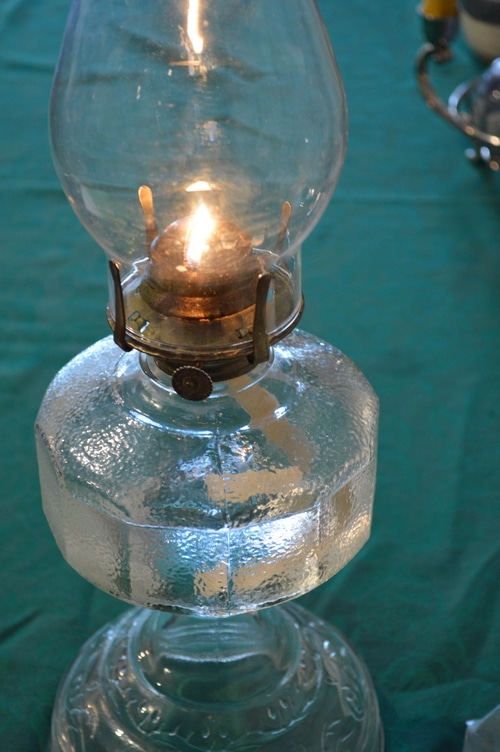



Does the top Pull up? This video shows how on a Dietz lantern:
https://youtu.be/sT7Qp7ed4T4
How do you get the glass chimney off a metal oil lamp that has the crossed metal bands holding it in place and the metal lever on the side that raises and lowers the chimney?
Unless the collar is threaded, it is, in all probability, attached with plaster of paris. Should you wish to replace the plaster, you will need to soak the collar for a few days in white vinegar. It will help dissolve the plaster, and you can lightly twist the collar until it easily lifts from the neck of the lamp. When ready to apply a new collar, or an undamaged old one, you will need to mix up a small amount of plaster of paris and apply it to the neck of the lamp and seat the collar back on the neck, twisting as it is set down. After an hour or so, any residual dried plaster can be easily lifted with a dull knife.
How do you remove the collar from the oil lamp? I didn’t see any instructions. Our collar will not move when I try to unscrew it. I didn’t see any pictures for this.
When I was a lad growing up in the West Indies we still had schooners plying their trade up and down the Islands and they taught us to trim the wicks with a slight curve across the end of the wick which gave a clean light and did not smoke up the chimnies..